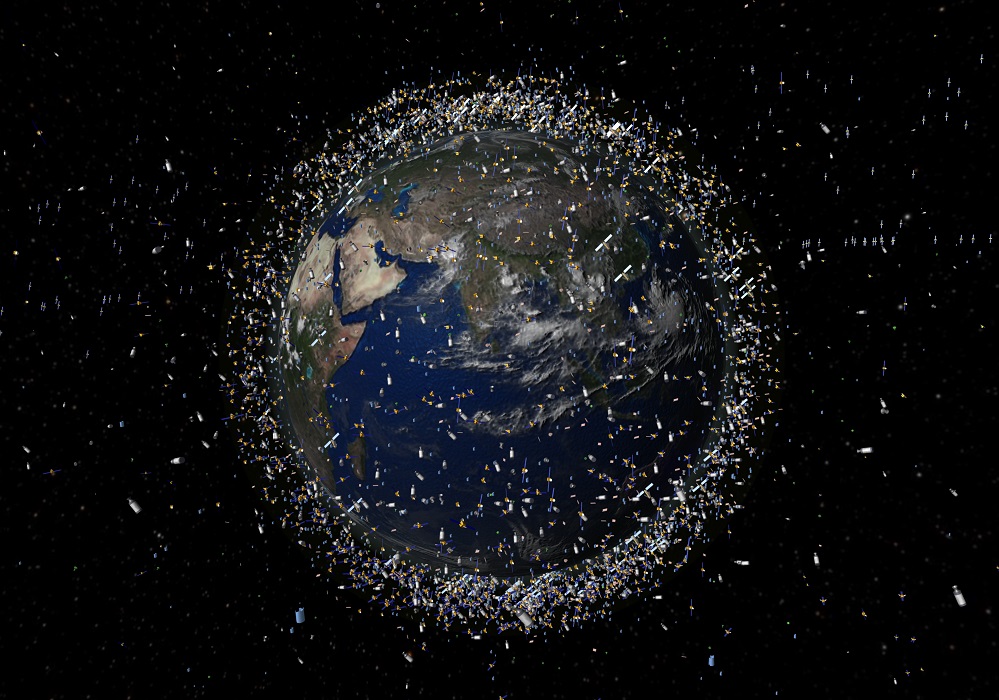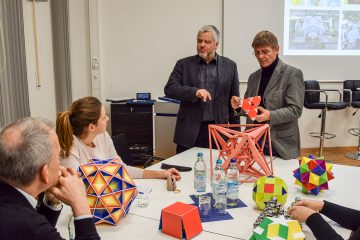Satellites in orbit – research assistants, everyday helpers or space junk?

Munich, 18 March 2024
Technologies from the space sector are already having a major impact on our everyday lives. Without communication, navigation and Earth observation satellites, the comfort we are used to would not be possible, and they are helping to research our solar system and global climate change. However, the increased volume of traffic in orbit is increasingly becoming a challenge. Experts at acatech discussed how this can be dealt with at the acatech Forum in Munich on Tuesday 5 March.
In his welcome address, acatech President Jan Wörner spoke about the geopolitical importance of space travel and its contribution to overcoming global challenges – such as climate change: around 50 per cent of the diverse environmental data can only be collected through observation from space by satellites, according to Jan Wörner. This can help to gain new insights into the impact of climate change on a wide variety of global ecosystems. The demand for such environmental data, communication and navigation services is now so enormous that increasingly private companies are also interested in this field of business.
Airbus, primarily known for its aircraft, also manufactures space probes, navigation, telecommunications and Earth observation satellites, as Francois Lombard, Airbus Defence and Space, reported in his contribution. Airbus also offers services in the field of satellite communication and Earth observation. One of Airbus’ Earth observation applications is the “Starling Service”: a geodata service that promotes sustainable development by monitoring changes in forested areas using optical data. Satellites, whose development was very cost-intensive, are responsible for the measurements. In the event of damage or a loss of function as a result of a collision with space debris, the services offered are lost on the one hand, while on the other hand the necessary replacement also results in a high economic loss for the company.
Solutions for dealing with space debris
Old satellites, lost tools, tiny metal particles – the amount and variety of space debris orbiting the Earth is huge. Travelling at immense speeds of several tens of thousands of kilometres per hour, fragments as small as a centimetre can cause major damage to satellites and space stations. As a result, obstacle avoidance manoeuvres are becoming increasingly necessary, sometimes with very short notice, reported Chiara Manfletti. She holds the Chair of Space Propulsion and Mobility at the Technical University of Munich and is CEO of Neuraspace, a start-up that is working on solutions for collision avoidance in space by reducing manual interventions for course correction. Sustainability therefore also plays a role in orbit. According to Chiara Manfletti, the constant growth in space traffic requires scalable methods in order to be able to navigate with less risk. With the help of artificial intelligence and machine learning, her company is endeavouring to develop such methods and provide corresponding services.
Franziska Knur, German Space Agency at DLR, is a member of the German delegation to the UN Space Committee. As the researcher explained in her contribution, the 1967 Outer Space Treaty is still valid and, although it has lost none of its relevance to this day, it must be made fit for the future so that space travel can be sustainable in the long term and for the benefit of all. According to Franziska Knur, international space traffic management that can guarantee the long-term freedom of space could represent such a development.
In the subsequent discussion, moderated by Jeanne Rubner, Technical University of Munich, the panel discussed the possibility of national and international agreements for dealing with satellites after their useful life. One suggestion: as soon as a satellite has to be brought down, the operator must also commission a service provider to dispose of it – alternatively, a deposit could be made and retained until it is actually disposed of. The panellists agreed that a so-called cemetery orbit could not be the solution. Even in the near-Earth part of space, usable space is limited.




